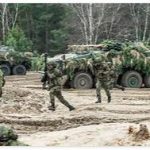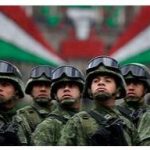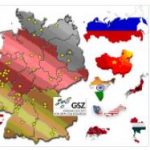Population, society and rights
The Lithuanian population has decreased by over 700,000 since 1990. Between 2005 and 2010, Lithuania recorded the highest emigration rate in Europe (2.3%). It is no coincidence that remittances from abroad now represent about 5% of the entire Lithuanian GDP. Lithuania is the most ethnically homogeneous country among the three Baltic republics. The main ethnic minority is made up of the Poles, who represent 7% of the population, while the Russians do not exceed 6%. The country guarantees civil and political liberties. Some difficulties, however, stand between the formal recognition of certain rights and their effective protection. Corruption is quite widespread. Some social and cultural barriers also hinder the effective exercise of gender equality and the equality of minorities. Like the other Baltic states, Lithuania has very reluctantly welcomed the refugee sharing plan through a quota system between EU member states.; however, the government agreed to accommodate 1105 people, a higher number than that agreed by Latvia (776) and Estonia (523).
Economy and energy
The Lithuanian GDP is significantly higher in absolute terms than that of its Baltic neighbors, but remains slightly lower than that of Estonia when compared on a per capita level. After a severe period of crisis and adjustment in the first half of the 1990s, due to the separation from the Soviet leadership market and the loss of energy supplies at subsidized prices, since 1995 the Lithuanian economy has maintained a growth rate of over 6% per year.. The consequences of the global recession were also felt in Lithuania, where in 2009 there was a contraction in growth, which fell to -15% of GDP. After the crisis, Vilnius has been confirmed for years among the best economies in the Eu. Today, the decrease in external demand and the negative impact of Western sanctions on Russian purchasing capacity have caused a slowdown in economic growth. Lithuania is also particularly affected by the Moscow import blockade. However, the increase in employment and average wages could stimulate domestic demand. In 2015, the GDP had a value of 41,776 million euros, with a growth of 1.8%.
A good level of stability and a balanced economic policy have made it possible to keep the levels of public debt (below 40%) and budget deficit (1.5%) low, while also recording a negative inflation rate, equal to -0., 4%. In the period between the two crises, there was a growth in the service sector, which drove the economy becoming increasingly important, especially thanks to the development of trade, business services and transport.
After years of equilibrium, the trade balance marks a negative figure caused by the dependence on imports of mineral materials. The Lithuanian commercial sector is closely linked to Russia, the largest trading partner, which creates, in fact, an economic and energy dependence of Vilnius on Moscow. Equally important for Lithuania is the economic link with the other two Baltic players and with Germany.
Lithuania also benefits from significant tax revenues from transit trade, particularly in the petroleum products sector passing through the Kaliningrad exclave.
The latest developments in Ukraine have also had an important impact on Lithuanian energy security. Despite the improvement of Lithuanian energy supply networks, thanks above all to electricity connections with Sweden and Poland, the construction of liquid natural gas terminals and the use of civilian nuclear power for domestic consumption, Vilnius’s dependence on Russian hydrocarbons still remains strong..
Defense and security
The fundamental pillars of Lithuanian defense policy are NATO membership and cooperation with the US. Vilnius also aims to contribute increasingly to international missions, so as to create an ever closer link between the security of the country and that of Western states. Lithuania maintained a contingent in Iraq until 2007 (with a peak of 120 soldiers) and in Kosovo and is now part of the ISAF mission in Afghanistan. For Lithuania defense and foreign policy, please check relationshipsplus.com.
The pride of the Lithuanian armed forces is the ‘Iron Wolf’ motorized infantry brigade, made up of five battalions capable of operating on the national territory as well as abroad. The Brigade participates in rotation in the NATO Response Force (Nrf), the Atlantic first aid device that can be deployed anywhere in the world in a few days. At naval level, the country cooperates with Estonia and Latvia and in 2010, right within the NRF, it set up the ‘Baltic Battalion’ with these two countries, under Lithuanian command. Another area the country is investing in to boost national security is intelligence : problems of coordination, human and economic resources had in fact made the Lithuanian services structurally fragile up to now. Since May 2015, the establishment of a joint brigade between Lithuania, Poland and Ukraine, made up of 4500 men, has been started.








